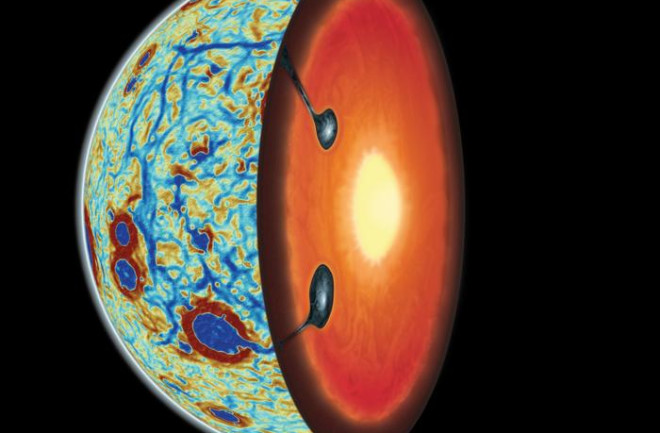The moon’s formation has been theoretically topsy-turvy for decades. Parts of the original molten magma surface sank below the crust. Over millennia, dense minerals mixed with the mantle, melted, and returned to the surface as titanium-rich lava flows. A paper in Nature Geoscience details and confirms this transformation.
"Our moon literally turned itself inside out," said Jeff Andrews-Hanna, a University of Arizona Lunar and Planetary Laboratory scientist and co-author of the study, in a press release. "But there has been little physical evidence to shed light on the exact sequence of events during this critical phase of lunar history, and there is a lot of disagreement in the details of what went down – literally."
What Happened to the Moon?
Researchers drew upon a combination of physical data and theoretical models to reach their conclusion.
First, Apollo astronauts more than 50 years ago returned with basaltic lava rocks — that had high levels of titanium — surprising because titanium wasn’t expected to be found on the moon’s surface. Later, satellite observations showed that the titanium-rich rocks came primarily from the moon's nearside. But how and why they got there was unknown.
Then a team led by Nan Zhang at Peking University in Beijing devised a model showing how. Zhang (also a co-author on the latest paper) and colleagues’ models predicted that the titanium-rich material beneath the crust first migrated to the near side of the moon, possibly triggered by a giant impact on the far side.
The material then cascaded into the interior in sheetlike slabs, almost like waterfalls. When that dense material sank, it left behind a small remnant in a geometric pattern of intersecting linear bodies of dense titanium-rich material beneath the crust.
Read More: Earth's Moon: The Basics of its Origin, Evolution, and Exploration
The Moon's Gravitational Pull
Finally, NASA’s GRAIL mission, whose two spacecraft orbited the moon between 2011 and 2012, recorded measuring tiny variations in the moon’s gravitational pull, depending on what parts of the moon’s surface they monitored. These so-called “linear anomalies” surround a vast dark region of the lunar near side covered by volcanic flows known as mare (Latin for "sea").
That data, combined with the new model, created a “Eureka Moment” for Andrews-Hanna’s team. "When we saw those model predictions, it was like a lightbulb went on," said Andrews-Hanna. The subtle differences in the moon’s gravitational field maps closely with area where dense material lurks beneath the crust.
"It turns out that the moon’s earliest history is written below the surface, and it just took the right combination of models and data to unveil that story," Andrews-Hanna said.
Read More: Here Are 4 Reasons Why We Are Still Going to the Moon
Article Sources
Our writers at Discovermagazine.com use peer-reviewed studies and high-quality sources for our articles, and our editors review them for accuracy and trustworthiness. Review the sources used below for this article:
Nature geoscience. Vestiges of a lunar ilmenite layer following mantle overturn revealed by gravity data.
Jeff Andrews-Hanna. Scientist at University of Arizona Lunar and Planetary Laboratory

